Honey locust, planting guide and care work
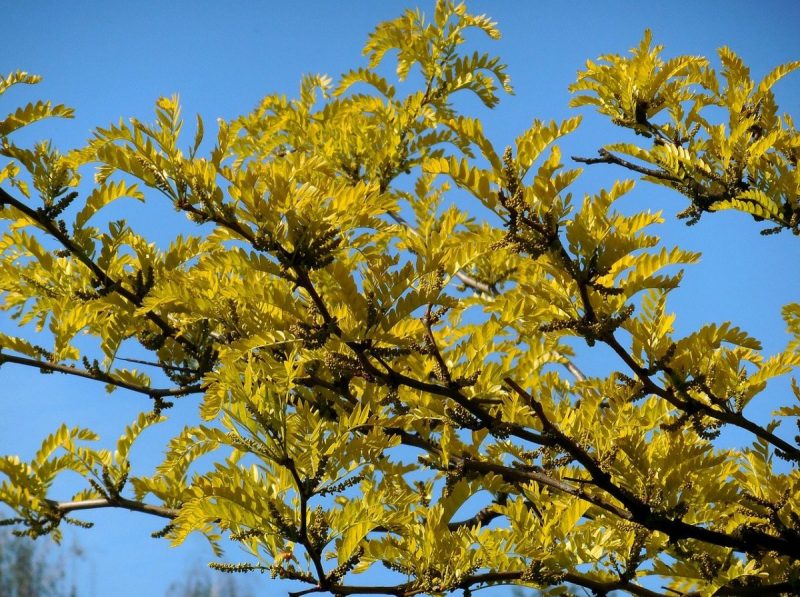
The honey locust (Gleditsia triacanthos) is a deciduous tree native to the southeastern part of North America. In some countries it behaves like a size II tree and can reach up to 15-20 m in height, has fast growth and it has deep roots. The stem is straight, with gray bark. The branches have reddish thorns, which then turn brown. The leaves are pinnately compound, with small leaflets, which turn in autumn yellow. The flowers are small, yellow-green, clustered in pendant, fragrant and honey-bearing racemes. Flowering takes place in June-July. The fruits are 30-40 cm long pods, twisted, reddish-brown, which remain on the branches during the winter.
Species and varieties
Gleditsia triacanthos ‘Pendula’ – it develops thin shoots, pendant.
Gleditsia triacanthos ‘Inermis Willd’ – it does not have thorns and it is often used for ornamental purposes in parks and gardens.
Gleditsia triacanthos ‘Pyramidalis’ – it has a pyramidal appearance.
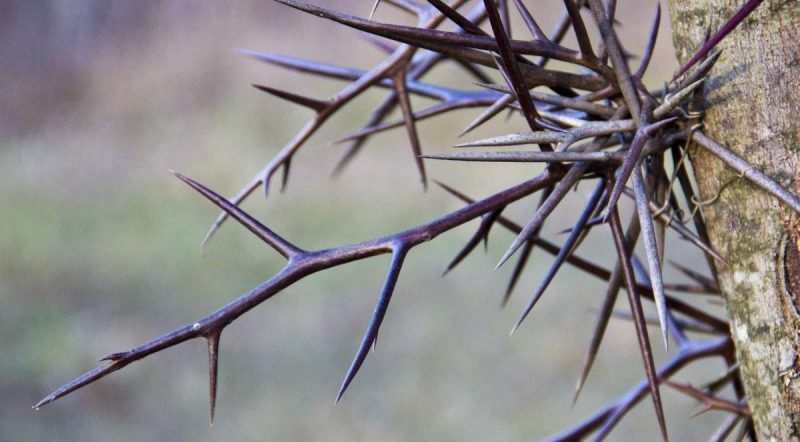
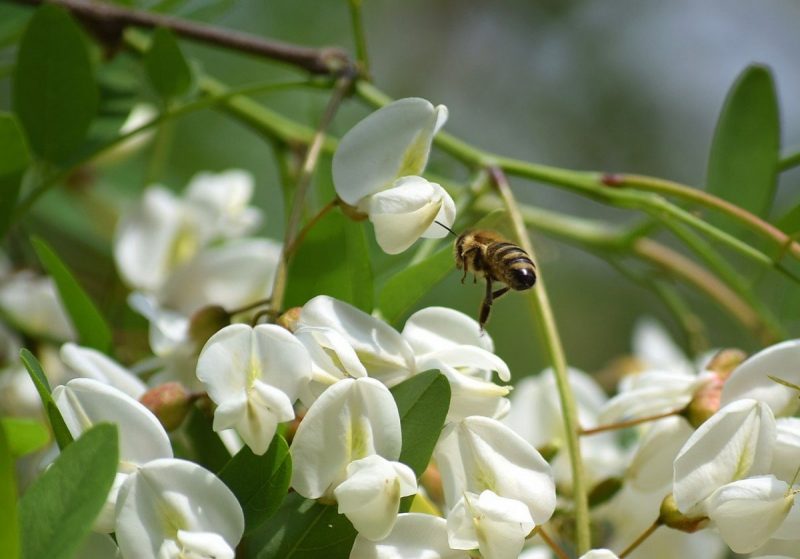
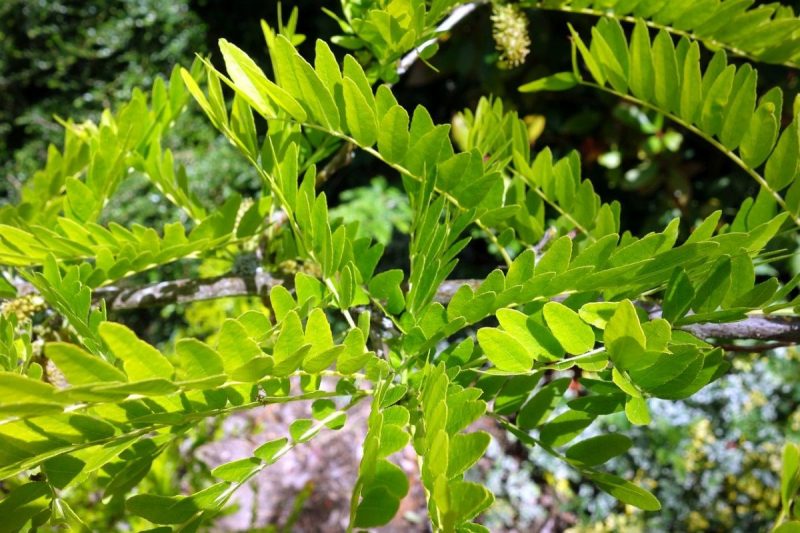
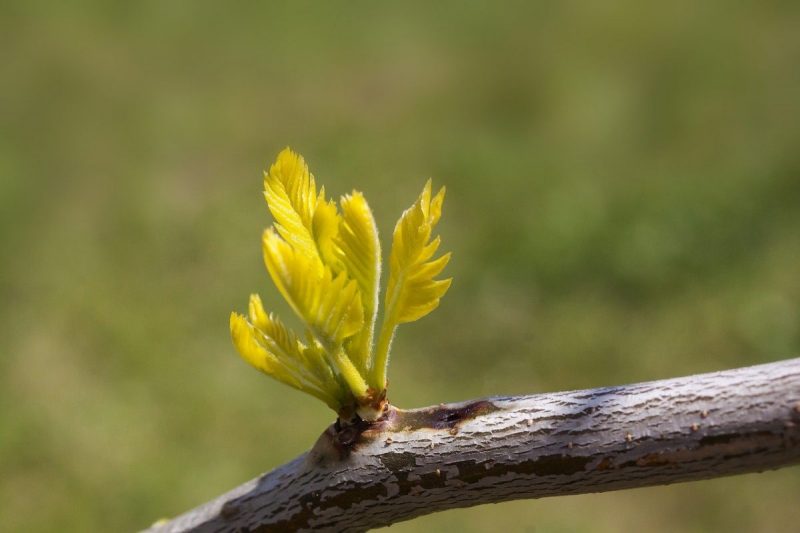
Environmental conditions
Light. It is a light-loving species, it grows well in direct sunlight.
Temperature. It prefers a mild and warm climate, but it also adapts to more unfavorable environmental conditions.
Humidity. It needs moderate humidity, but it can withstand drought well for short periods of time.
Soil. It grows very well in rich and loose soils, but it can adapt to almost any type of soil.
The honey locust does not require much special care. The tree needs to be well watered when planted and during the first weeks. After that, only when necessary.
Pruning
It is recommended that maintenance pruning be done in the autumn, after the leaves fall, or in early spring. You should remove dry and broken branches. In the first years, crown shape correction cuts can be done.
Recommended products
-
You can find products on a different store
Change Store -
You can find products on a different store
Change Store -
You can find products on a different store
Change Store -
You can find products on a different store
Change Store -
You can find products on a different store
Change Store -
You can find products on a different store
Change Store -
You can find products on a different store
Change Store -
You can find products on a different store
Change Store -
You can find products on a different store
Change Store -
You can find products on a different store
Change Store -
You can find products on a different store
Change Store -
You can find products on a different store
Change Store -
You can find products on a different store
Change Store -
You can find products on a different store
Change Store -
You can find products on a different store
Change Store -
You can find products on a different store
Change Store -
You can find products on a different store
Change Store -
You can find products on a different store
Change Store -
You can find products on a different store
Change Store -
You can find products on a different store
Change Store -
You can find products on a different store
Change Store -
You can find products on a different store
Change Store -
You can find products on a different store
Change Store -
You can find products on a different store
Change Store
Recommended products
-
You can find products on a different store
Change Store -
You can find products on a different store
Change Store -
You can find products on a different store
Change Store -
You can find products on a different store
Change Store -
You can find products on a different store
Change Store -
You can find products on a different store
Change Store -
You can find products on a different store
Change Store -
You can find products on a different store
Change Store -
You can find products on a different store
Change Store -
You can find products on a different store
Change Store -
You can find products on a different store
Change Store -
You can find products on a different store
Change Store -
You can find products on a different store
Change Store -
You can find products on a different store
Change Store -
You can find products on a different store
Change Store -
You can find products on a different store
Change Store -
You can find products on a different store
Change Store -
You can find products on a different store
Change Store -
You can find products on a different store
Change Store -
You can find products on a different store
Change Store -
You can find products on a different store
Change Store -
You can find products on a different store
Change Store -
You can find products on a different store
Change Store -
You can find products on a different store
Change Store
Planting
It should be done during the dormancy period, in autumn or early spring, when the soil is not frozen.
Fertilization
It should be done in spring, with specific fertilizers.
Recommended products
-
You can find products on a different store
Change Store -
You can find products on a different store
Change Store -
You can find products on a different store
Change Store -
You can find products on a different store
Change Store -
You can find products on a different store
Change Store -
You can find products on a different store
Change Store -
You can find products on a different store
Change Store -
You can find products on a different store
Change Store -
You can find products on a different store
Change Store -
You can find products on a different store
Change Store -
You can find products on a different store
Change Store -
You can find products on a different store
Change Store -
You can find products on a different store
Change Store -
You can find products on a different store
Change Store -
You can find products on a different store
Change Store -
You can find products on a different store
Change Store -
You can find products on a different store
Change Store -
You can find products on a different store
Change Store -
You can find products on a different store
Change Store -
You can find products on a different store
Change Store -
You can find products on a different store
Change Store -
You can find products on a different store
Change Store -
You can find products on a different store
Change Store -
You can find products on a different store
Change Store
Propagation
It is propagated through seeds – sowing should be done in autumn with seeds harvested in the same year (autumn). For a higher germination rate, given that the honey locust tree’s seeds have hard tegument, it is recommended that they be kept in hot water for about 10 minutes, after which they have to be kept in water at room temperature for another 10 hours. Then they can be sown, and the soil must remain moist to promote germination.
Recommended products
-
You can find products on a different store
Change Store -
You can find products on a different store
Change Store -
You can find products on a different store
Change Store -
You can find products on a different store
Change Store -
You can find products on a different store
Change Store -
You can find products on a different store
Change Store -
You can find products on a different store
Change Store -
You can find products on a different store
Change Store -
You can find products on a different store
Change Store -
You can find products on a different store
Change Store -
You can find products on a different store
Change Store -
You can find products on a different store
Change Store -
You can find products on a different store
Change Store -
You can find products on a different store
Change Store -
You can find products on a different store
Change Store -
You can find products on a different store
Change Store -
You can find products on a different store
Change Store -
You can find products on a different store
Change Store -
You can find products on a different store
Change Store -
You can find products on a different store
Change Store -
You can find products on a different store
Change Store -
You can find products on a different store
Change Store -
You can find products on a different store
Change Store -
You can find products on a different store
Change Store
Diseases and pests
It is a tree resistant to diseases and pests.
In addition:
- the honey locust tree is frequently used to improve degraded soils due to its deep rooting. It is also used to make protective curtains for agricultural crops.















































































































































































































































































































































































































































